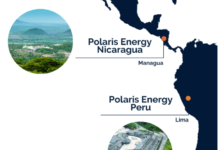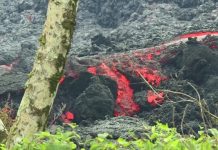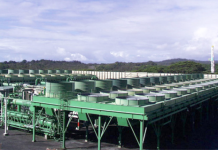by Debra Fiakas CFA
 |
| Calpine Plant at The Geysers. Photo Source: Calpine |
In the article “Is Ormat Technologies Misunderstood?”, I outlined a few performance measurement issues, but left out of the story Ormat’s position in the relative position in the geothermal industry. Naturally I received comments from readers about why I made no comparison of Ormat to Calpine Corporation (CPN: NYSE), the largest U.S. generator of electrical power using geothermal sources. On a go-forward basis Calpine shares are valued about the same as Ormat Technologies, Inc. (ORA: NYSE), at least on the basis of projected earnings per share. However, besides simply being a larger company with greater longevity in the power generation market, Calpine offers a significantly higher dividend yield and benefits from a sturdier balance sheet. There are other differences.
Other Differences
Calpine relies on open-loop system that pumps superheated steam out of deep geological formations. After using the steam to drive turbines that turn electricity generators, the water is sent to cooling towers and is either reused or evaporates. With existing technology, Calpine recycles approximately 25 percent of the water back into the steam reservoir with the remainder lost to evaporation. Herein lies Calpine’s problem.
As superheated steam is removed from deep underground the formations lose pressure. At The Geysers in California were Calpine operates 15 power plants, peak production capacity was 2,000 megawatts in the 1970s. Calpine is only producing about 850 megawatts today because pressures have reportedly declined. Indeed, Calpine has made arrangements with nearby local governments to treat and infuse waste water into the formations as a means to restore underground steam pressure.
Calpine describes this practice on its corporate website as if it was just a community service that no one else would undertake. In reality it is vital to the longevity of The Geysers.
“The company helped develop the Lake County-Southeast Geysers Effluent Pipeline project, which was the first wastewater-to-electricity project in the world. This 29-mile underground pipeline delivers eight million gallons of reclaimed water to The Geysers every day. Since it began operating in September 1997, more than twenty billion gallons of treated wastewater from Lake County have been recycled into the steam reservoir, increasing the long-term productivity of the resource…. In addition, the company helped launch the Santa Rosa Geysers Recharge Project that transports 11 million gallons of reclaimed water per day from Santa Rosa to The Geysers through a 41-mile underground pipeline.”
Calpine makes little mention in its various public filings of the potential demise of The Geysers as a consequence of the open-loop system it uses in the project. It also does not mention that the agreements with local governments for waste water are subject to renewal. Local governments are keenly pursuing various technologies and projects to turn waste streams – both solid and liquid – into cash streams. As a consequence Calpine may have competition for these critical water sources in the future. The agreement with Lake County expires in 2022 and the Santa Rose arrangement runs through 2038. Calpine quietly deals with the dwindling water pressure issue by backing off on power generation. The company has adjusted turbines sizes to the reduced flow levels.
By contrast Ormat relies on a closed loop system that returns water underground after the superheated steam is used. Ormat calls it the Ormat Energy Converter that is based on proprietary tweaks to organic rankine cycle technology. Ormat claims its air-cooled condenser technology enables re-injection of almost 100% of all extracted geothermal fluids. As a consequence Ormat does not have to worry about sourcing external water resources to ensure reservoir life. There are a couple of other benefits: no rotten egg smell from the steam brought up to the surface and exposed in an open system and no potentially toxic chemical additives required to treat re-injected water. Ormat’s systems also have a lower profile against the existing terrain and vegetation.
Enhanced Geothermal Systems
To be fair Calpine is not resting on its open-loop system – although investor would never know it by reading Calpine’s public filings. Even though the quarter and annual reports are silent on the topic, Calpine is actually hard at work on an enhanced geothermal system. EGS as it is called is expected to sidestep the thornier issues associated with conventional open-loop systems.
First it has to be acknowledged that geothermal energy compares very favorably to other energy sources in terms of the trade-off between power generated and environmental cost. It does not create CO2 toxic emissions as with coal or natural gas powered utilities. It does not compete with food crops like ethanol. It offers consistent 24/7 electricity generation that requires no back-up power source or storage infrastructure like solar or wind.
The U.S. Geological Survey did a bit of math and determined that U.S. geological formations (mostly in the Western section of the country) could yield 16 gigawatts of potential power from easily accessible geothermal formations. Fine tune certain technologies and the U.S. could wring 725 gigawatts of power out of the Lower Forty-eight. To put that in perspective the U.S. uses approximately 4,200 gigawatts of electricity each year. The number could go several times higher if engineers can figure out how to capitalize on the geothermal potential in hot, dry rock that is found abundantly all over the U.S. MIT estimates that, using EGS, just 2% of the heat below surface in the continental U.S. at depths of 3 to 10 kilometers could supply 2500 times the nation’s current energy needs.
The math has Calpine driving hard to perfect EGS. Unlike conventional geothermal like that used by Calpine at The Geysers, EGS does not require an existing underground reservoir of steam or water. Instead fracturing technologies are used to inject cold water under low pressure to expand existing fractures in a hot rock formation. Another well is drilled at the end of the system to extract the steam that is created. The water can be cooled and re-used.
A big plus is that EGS requires substantially less water. However, it engenders a whole new issue. The fracturing technologies are the same as those that have environmentalists campaigning against the oil and gas industry. The EGS fracturing process could lead to small earthquakes. However, the low pressures of the water help reduce the likelihood of substantial quakes. The water i
s also free of chemicals.
Calpine has a demonstration site in the works in The Geysers. It formed a partnership with the U.S. Department of Energy in 2008 to build a $12 million EGS demonstration project. Calpine started community hearings in August 2011 to bring local residents in to the conversation.
Help may be on the way from Ormat Technologies. Along with Hi-Q Geophysical, Inc., Ormat is developing surface and borehole seismic methodologies using compression and shear waves for characterizing fractures in EGS. In 2008, Ormat Nevada started working with GeothermEx and other research groups to stimulate multiple wells at Brady Field in Nevada to evaluate a fracturing system.
Debra Fiakas is the Managing Director of Crystal Equity Research, an alternative research resource on small capitalization companies in selected industries.
Neither the author of the Small Cap Strategist web log, Crystal Equity Research nor its affiliates have a beneficial interest in the companies mentioned herein. ORA and CPN is included in the Geothermal Group of Crystal Equity Research’s Electric Earth Index.







